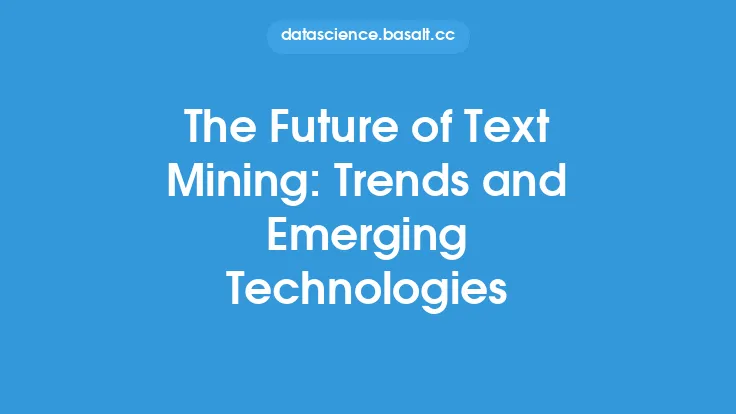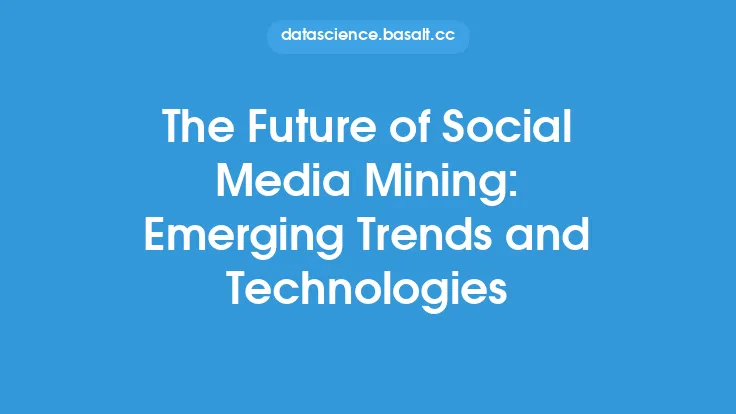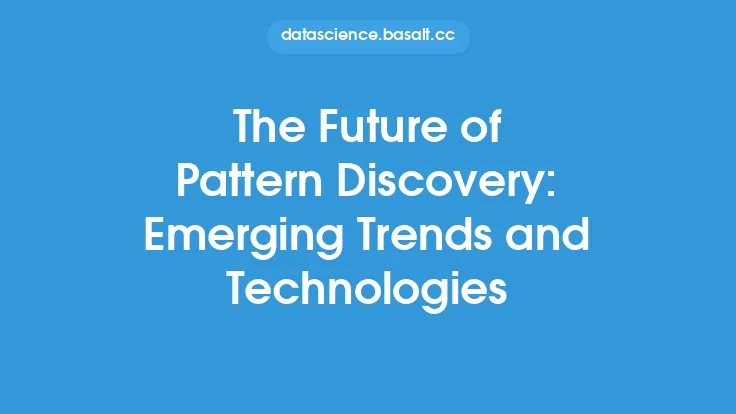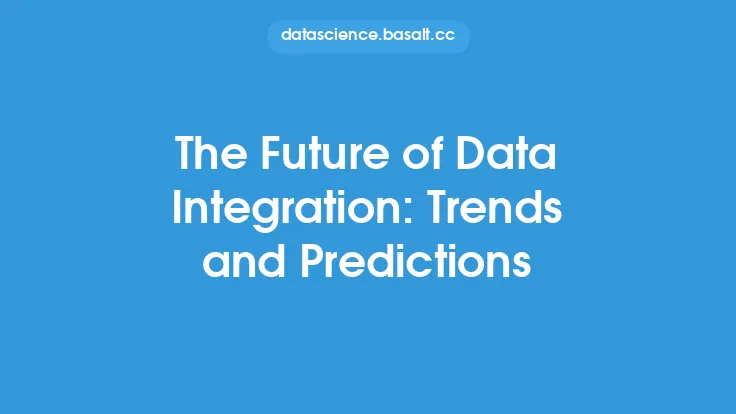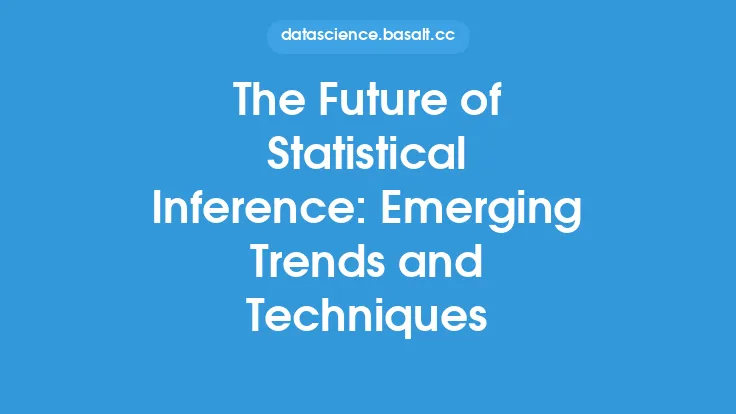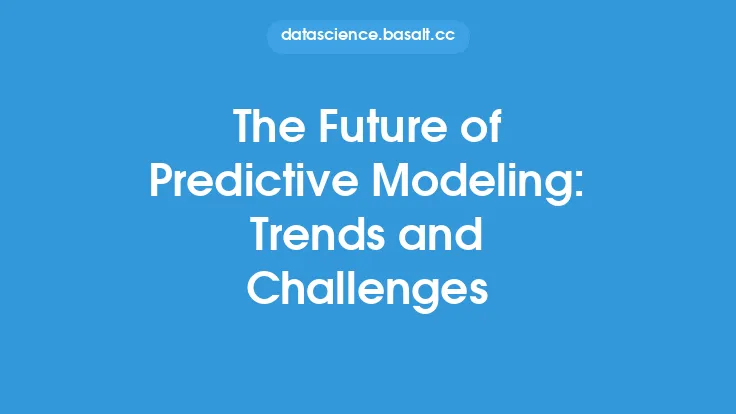The concept of data provenance has been gaining significant attention in recent years, particularly in the context of data quality, as it plays a crucial role in ensuring the reliability, transparency, and trustworthiness of data. Data provenance refers to the process of tracking the origin, history, and evolution of data, including its creation, modification, and movement throughout its lifecycle. As data becomes increasingly important in various aspects of modern life, the need for robust data provenance systems has become more pressing. In this article, we will delve into the emerging trends and technologies that are shaping the future of data provenance.
Introduction to Data Provenance Technologies
Data provenance technologies have evolved significantly over the years, from simple metadata management systems to complex, distributed, and scalable architectures. Modern data provenance systems utilize a range of technologies, including blockchain, graph databases, and cloud-based infrastructure, to provide a secure, transparent, and auditable record of data provenance. These technologies enable organizations to track data lineage, detect data anomalies, and ensure data integrity, which is essential for maintaining data quality and reliability.
Emerging Trends in Data Provenance
Several emerging trends are expected to shape the future of data provenance, including the increasing adoption of artificial intelligence (AI) and machine learning (ML) techniques, the growing importance of data governance, and the rising need for real-time data provenance. AI and ML can be used to automate data provenance tasks, such as data lineage tracking and anomaly detection, while data governance frameworks can provide a structured approach to managing data provenance. Real-time data provenance, on the other hand, enables organizations to respond quickly to data-related issues, such as data breaches or data quality problems.
Blockchain-Based Data Provenance
Blockchain technology has emerged as a promising solution for data provenance, particularly in applications where data integrity and security are paramount. Blockchain-based data provenance systems utilize a distributed ledger to record data transactions, ensuring that data is tamper-proof and auditable. This approach provides a high level of transparency, security, and trust, making it ideal for applications such as supply chain management, healthcare, and finance. Additionally, blockchain-based data provenance systems can be used to create a permanent and unalterable record of data provenance, which can be used to demonstrate compliance with regulatory requirements.
Graph Database Technologies for Data Provenance
Graph database technologies have also gained popularity in data provenance applications, particularly in scenarios where complex data relationships need to be modeled. Graph databases provide a flexible and scalable way to store and query data provenance information, enabling organizations to track data lineage, detect data anomalies, and perform advanced analytics. Graph database technologies, such as Neo4j and Amazon Neptune, offer high-performance querying capabilities, making them suitable for large-scale data provenance applications.
Cloud-Based Data Provenance Solutions
Cloud-based data provenance solutions have become increasingly popular, particularly among organizations that require scalable and on-demand data provenance capabilities. Cloud-based solutions, such as AWS Lake Formation and Google Cloud Data Fusion, provide a range of benefits, including reduced infrastructure costs, increased scalability, and improved collaboration. These solutions also offer advanced security features, such as encryption and access controls, to ensure that data provenance information is protected.
Data Provenance Standards and Interoperability
The development of data provenance standards and interoperability frameworks is critical to ensuring that data provenance systems can communicate and exchange information seamlessly. Standards, such as the W3C Provenance Specification and the Open Provenance Model, provide a common language and framework for describing data provenance, enabling organizations to share and integrate data provenance information across different systems and applications. Interoperability frameworks, such as the Data Provenance Interoperability Framework, enable organizations to integrate data provenance systems with other data management systems, such as data governance and data quality platforms.
Real-Time Data Provenance and Streaming Analytics
Real-time data provenance and streaming analytics are becoming increasingly important in modern data-driven applications, particularly in scenarios where data needs to be processed and analyzed in real-time. Real-time data provenance enables organizations to track data as it is generated, processed, and consumed, providing a complete and up-to-date view of data provenance. Streaming analytics technologies, such as Apache Kafka and Apache Flink, enable organizations to process and analyze large volumes of data in real-time, providing insights into data provenance and enabling rapid response to data-related issues.
Data Provenance and Explainable AI
The increasing use of AI and ML models in data-driven applications has created a need for explainable AI (XAI) techniques that can provide insights into model decision-making. Data provenance plays a critical role in XAI, as it provides a record of the data used to train and validate AI models. By tracking data provenance, organizations can identify biases in AI models, detect data quality issues, and provide explanations for model decisions. XAI techniques, such as model interpretability and model explainability, rely on data provenance information to provide insights into AI model behavior.
Conclusion
The future of data provenance is exciting and rapidly evolving, with emerging trends and technologies shaping the way organizations manage and track data. From blockchain-based data provenance systems to graph database technologies and cloud-based solutions, a range of innovative approaches is being developed to address the challenges of data provenance. As data becomes increasingly important in modern life, the need for robust data provenance systems will continue to grow, driving innovation and adoption in this critical area of data quality.
